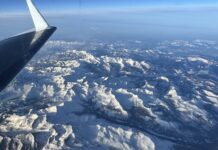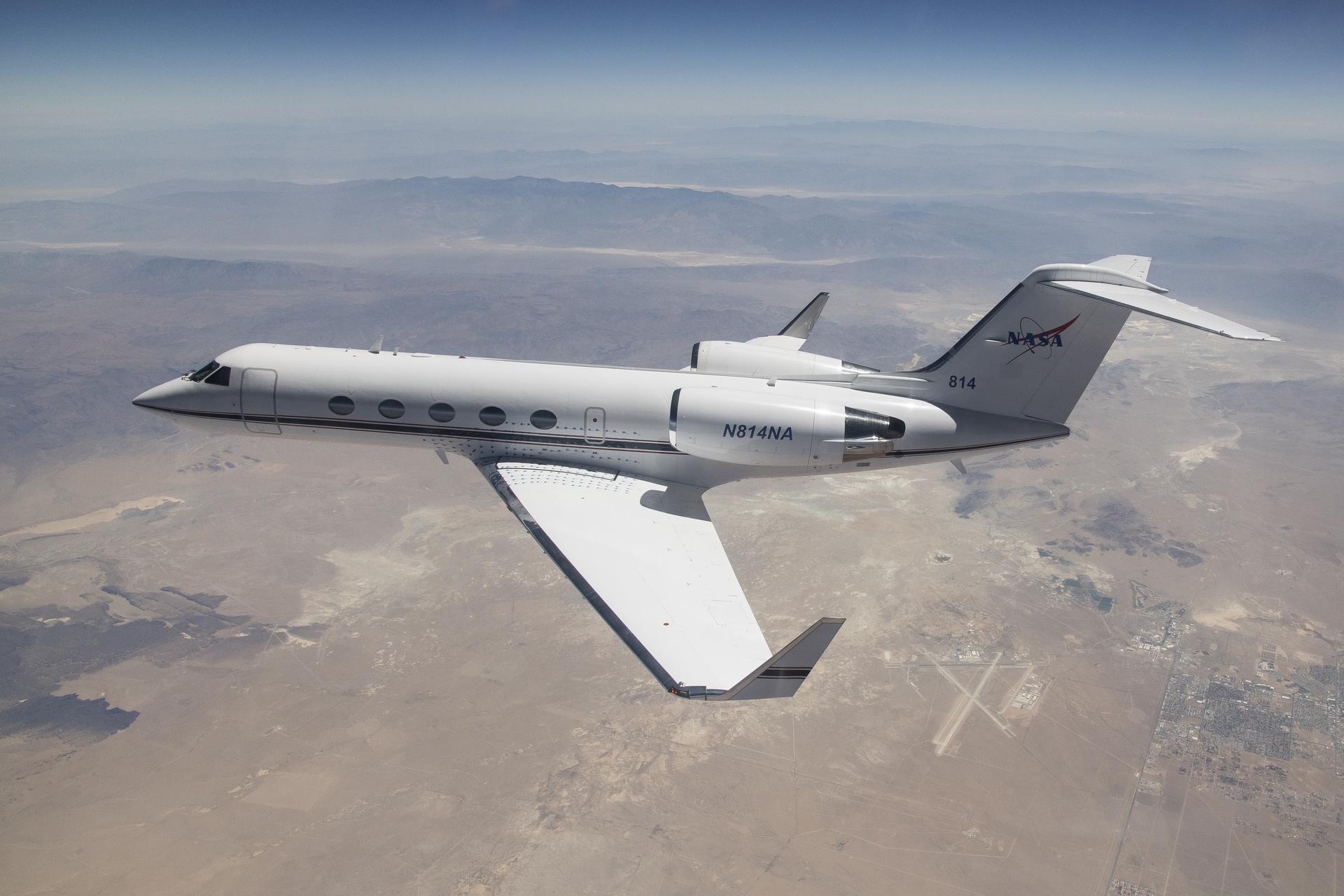NASA Armstrong Enhances Airborne Science Fleet with Gulfstream IV Integration
In June 2024, a new aircraft tail number graced the skies over NASA’s Armstrong Flight Research Center in Edwards, California. This marked the commencement of flight evaluations for a Gulfstream IV (G-IV) aircraft. During these preliminary flights, pilots focused on assessing the G-IV’s handling characteristics and familiarizing themselves with its operation. These steps are crucial as the aircraft is set to undergo significant modifications to better support NASA’s Airborne Science program.
Introduction of Next-Generation Radar Technology
The G-IV is being prepared to carry the Next Generation Airborne Synthetic Aperture Radar (AIRSAR-NG). This advanced radar system is designed to send and receive microwave signals, enabling the collection of detailed information about Earth’s topographic features and their changes over time. The main objective is to modify the G-IV to house three distinct radars concurrently, enhancing its data collection capabilities.
Yunling Lou, the principal investigator for the AIRSAR-NG at NASA’s Jet Propulsion Laboratory in Southern California, elaborated on the benefits of this new instrument. "The AIRSAR-NG will integrate three different Synthetic Aperture Radar antennas into one system, providing unprecedented insights into Earth’s surface more efficiently. This new capability will enable innovative techniques, such as three-dimensional imaging, which will be highly beneficial for future space-borne missions."
Enhancements and Capabilities
The modifications on the G-IV extend beyond just radar integration. The aircraft will also be equipped to carry a larger array of scientific instruments. This expanded capacity will allow NASA to support more dynamic and comprehensive airborne science missions.
Franzeska Becker, the G-IV project manager at NASA Armstrong, emphasized the long-term benefits of these upgrades. "This aircraft will help Armstrong continue its long-standing tradition of supporting airborne science for NASA. It will also ensure we maintain our expertise in executing successful science missions for many years to come."
Transfer and Modification
The G-IV was transferred from NASA’s Langley Research Center in Hampton, Virginia, to its new home at Armstrong in February. This transfer is part of a broader strategy to enhance NASA’s airborne science capabilities. The team at NASA Armstrong is overseeing additional modifications to the aircraft to ensure it functions as a more versatile and capable research platform.
The combined knowledge and expertise at NASA centers like Armstrong and Langley will be pivotal in creating a well-defined and airworthy platform for various science instruments and missions. NASA Armstrong’s fleet includes aircraft like the ER-2 and C-20, while Langley operates models such as the 777 and G-III. The collaboration between these centers will facilitate the successful integration and operation of the G-IV within NASA’s Airborne Science program.
Technical Jargon Explained
To make this news accessible to all readers, let’s break down some of the technical terms:
- Synthetic Aperture Radar (SAR): A type of radar used to create detailed images of landscapes. It works by emitting microwave signals and then capturing the echoes that bounce back from the Earth’s surface. These echoes are processed to produce high-resolution images.
- Three-Dimensional Imaging: This technique involves capturing the height, width, and depth of objects or landscapes, providing a more comprehensive view compared to traditional two-dimensional images.
The Significance of AIRSAR-NG
The Next Generation Airborne Synthetic Aperture Radar (AIRSAR-NG) represents a significant leap in radar technology. By combining three different SAR antennas into one instrument, NASA can achieve more efficient data collection. This is particularly important for monitoring changes in Earth’s topography, which can provide valuable insights into natural phenomena like earthquakes, landslides, and glacier movements.
Moreover, the ability to create three-dimensional images will enhance our understanding of various geological processes. This technology will not only benefit airborne missions but also pave the way for future space-borne missions, where similar techniques can be employed on satellites orbiting the Earth.
Broader Impact on NASA’s Airborne Science Program
The integration of the G-IV into NASA’s Airborne Science program is a testament to the agency’s commitment to advancing scientific research through innovative technology. By upgrading its fleet with more capable and versatile aircraft, NASA can support a wider range of scientific studies. This includes everything from climate research and environmental monitoring to disaster response and planetary exploration.
The modifications to the G-IV also highlight the importance of collaboration between different NASA centers. Each center brings unique expertise and capabilities, contributing to the overall success of the program. For instance, NASA Armstrong’s experience with aircraft like the ER-2 and C-20 complements Langley’s expertise with models like the 777 and G-III. Together, they create a robust infrastructure for airborne science missions.
Future Prospects
Looking ahead, the enhanced capabilities of the G-IV and the integration of AIRSAR-NG will open new avenues for scientific exploration. Researchers will be able to gather more comprehensive data, leading to better-informed decisions and policies related to environmental conservation, disaster management, and resource utilization.
Additionally, the success of the G-IV project could set a precedent for future upgrades to NASA’s airborne fleet. As technology continues to evolve, there will be opportunities to incorporate even more advanced instruments and sensors, further expanding the scope and impact of airborne science missions.
Community and Expert Reactions
The scientific community has shown a keen interest in the developments at NASA Armstrong. Experts have lauded the introduction of AIRSAR-NG and the modifications to the G-IV, recognizing the potential for groundbreaking research.
Dr. Emily Johnson, a geophysicist at the University of California, Berkeley, shared her thoughts on the project. "The integration of AIRSAR-NG into the G-IV is a game-changer for Earth science research. The ability to collect high-resolution, three-dimensional data will provide new insights into geological processes and help us better understand the dynamics of our planet."
Similarly, environmentalists and policy-makers are optimistic about the potential applications of the data collected by the G-IV. The ability to monitor changes in Earth’s topography in real-time can aid in disaster preparedness and response, contribute to climate change research, and inform sustainable development practices.
Conclusion
The integration of the Gulfstream IV into NASA’s Airborne Science program, coupled with the introduction of the Next Generation Airborne Synthetic Aperture Radar (AIRSAR-NG), marks a significant milestone in scientific research. The modifications being made to the G-IV will enhance its capabilities, enabling NASA to support more dynamic and comprehensive airborne science missions.
With the expertise of teams at NASA Armstrong and Langley, the G-IV will serve as a more versatile and capable research platform. This collaborative effort underscores NASA’s commitment to advancing scientific knowledge through innovative technology. As the G-IV takes to the skies, it will undoubtedly contribute to a deeper understanding of our planet and beyond, paving the way for future discoveries and innovations.
For more Information, Refer to this article.


































